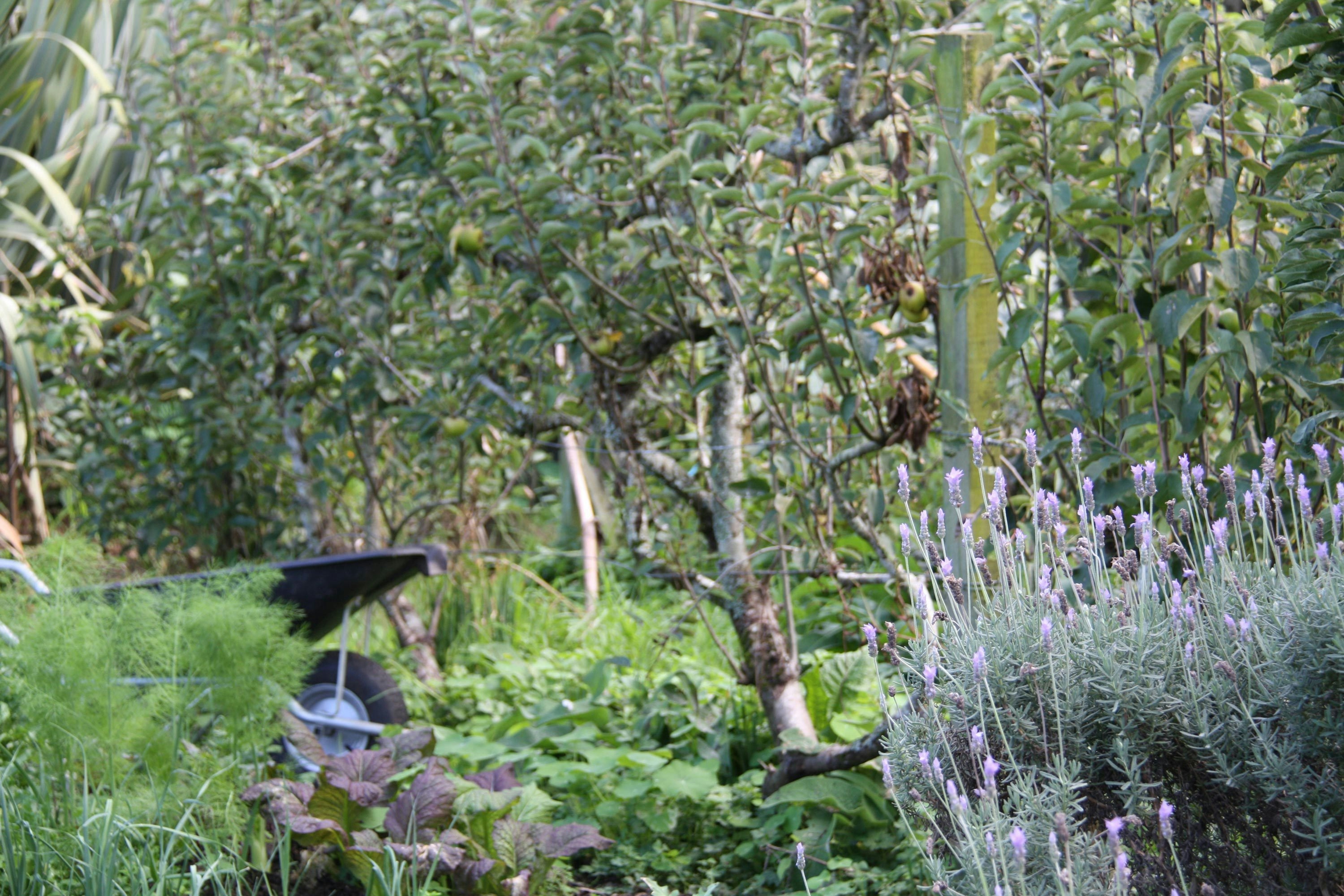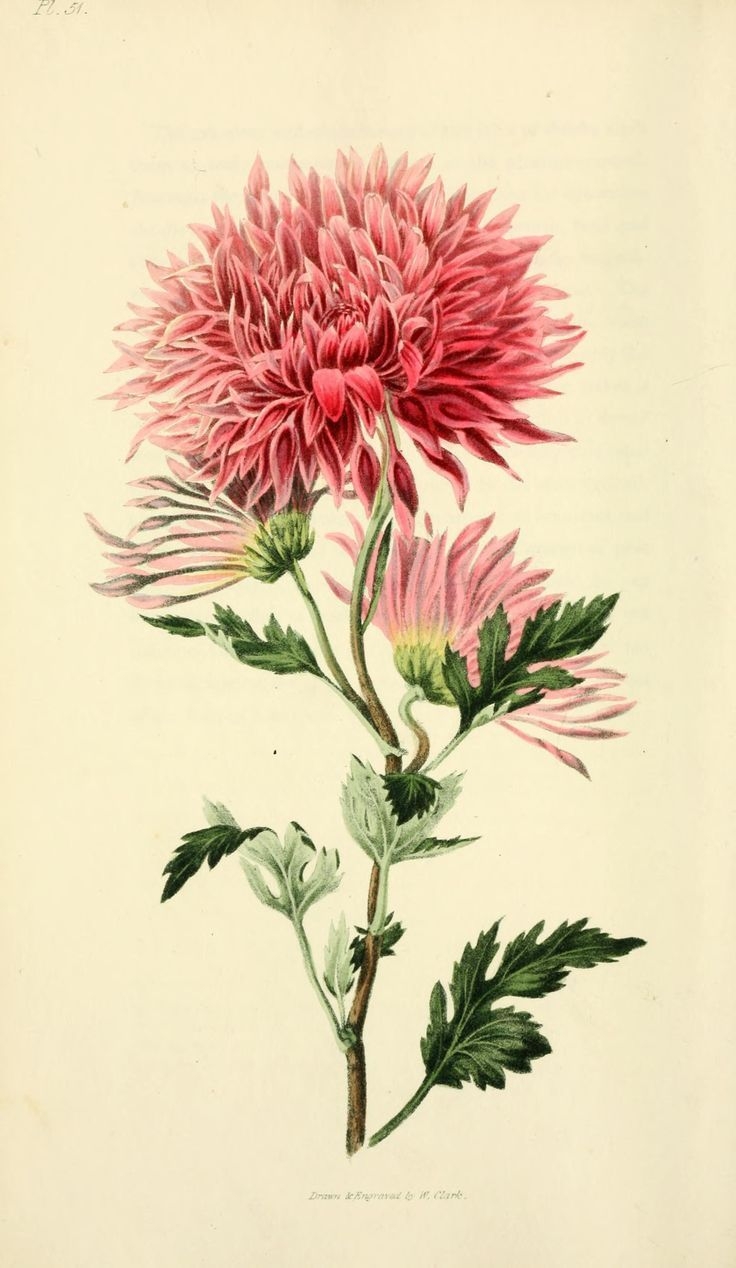
Journal — Dirt
Neeve Woodward
15th October 2020
Everything you need to know: Dahlias
Dahlias may seem intimidating if you haven't grown them before, but they are actually incredibly easy! Here we share our knowledge about which varieties to plant in your garden, including where, how and when to plant, as well as how to look after them.
Dahlias are - in my opinion - one of the best things about Summer! The unassuming dusty looking tubers rocket away with vigorous bushy foliage in late Spring, with riotous displays of colour and form that will flower for many months - with very little care. Dahlias are versatile as they can be happily moved around each season, making them ideal for filling gaps and bringing magic and wildlife to the garden. They are one of the best flowers for picking, hands-down. Growing dahlias is affordable and rewarding, so beware - it may become an obsession!

Dahlias are flowering perennial plants that hail from Mexico, grown by the Aztecs as a food source and discovered by Spanish botanists in the 18th century. They have tuberous storage systems called tubers, which are a starchy body that contains food, water, and nutrition for a dahlia plant to grow until it establishes a root system. Dahlia tubers sprout from the 'eye' of a tuber, when temperatures rise after a period of dormancy.

CHOSE YOUR FAVOURITES
Dahlias are available to purchase in tuber form from specialised growers from around July to November. There are countless varieties, colours and forms of dahlia to chose from. Dahlias have evocative names - Dinner plates produce showy blooms the size of your head; the petals of Cactus dahlias curl in on themselves creating a spiky appearance; Pompoms have tightly quilled symmetrical petals and look just like their namesake. Single dahlias resemble large upright, velvet-ey daisies, with flowers less intricate than their decorative cousins, but just as beautiful. The towering Dahlia imperialis or tree dahlia can grow as tall as a two storey building in a single season, with thick hollow stems - that were said to be used by the Aztecs as water pipes - and a profusion of flowers in May.
Feeling overwhelmed by the options? Some of my personal favourite varieties are the Keith Hammett sunflower dahlias (below right) which are easy and cheap to grow from seed with a very tall, elegant form and huge perfect blooms in an array of jewel tones. Another favourite is ‘Nuit d'Ete’ an almost-black cactus form that looks beautiful planted with lime nicotiana and soft pink silene. Honourable mentions from the author's last season garden were 'Edinburgh' & 'Checkers' with their full, frilly skirts fringed with white, and 'Blue Record' (below left) a moody magenta cactus with hints of purple at its tips.

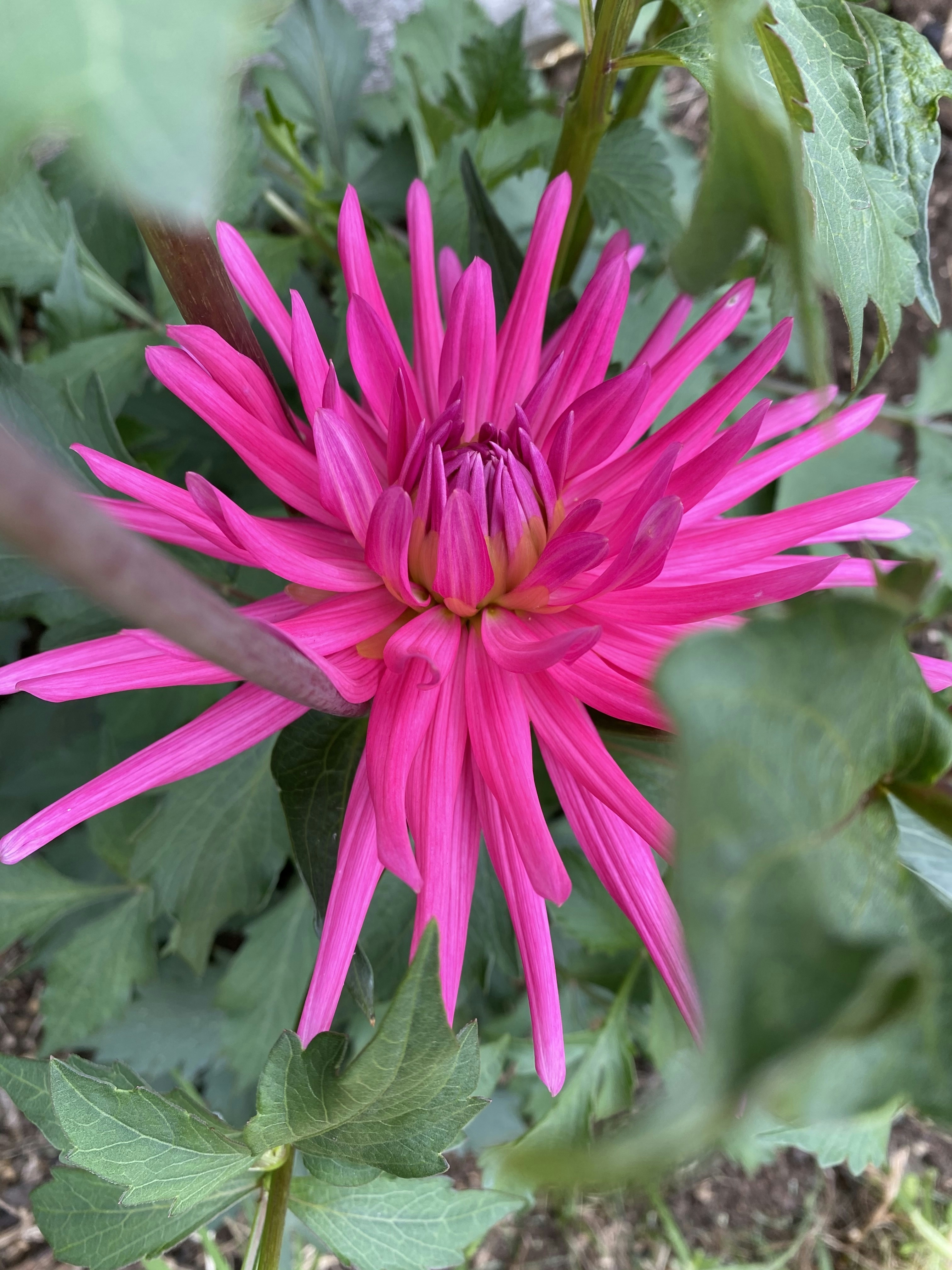
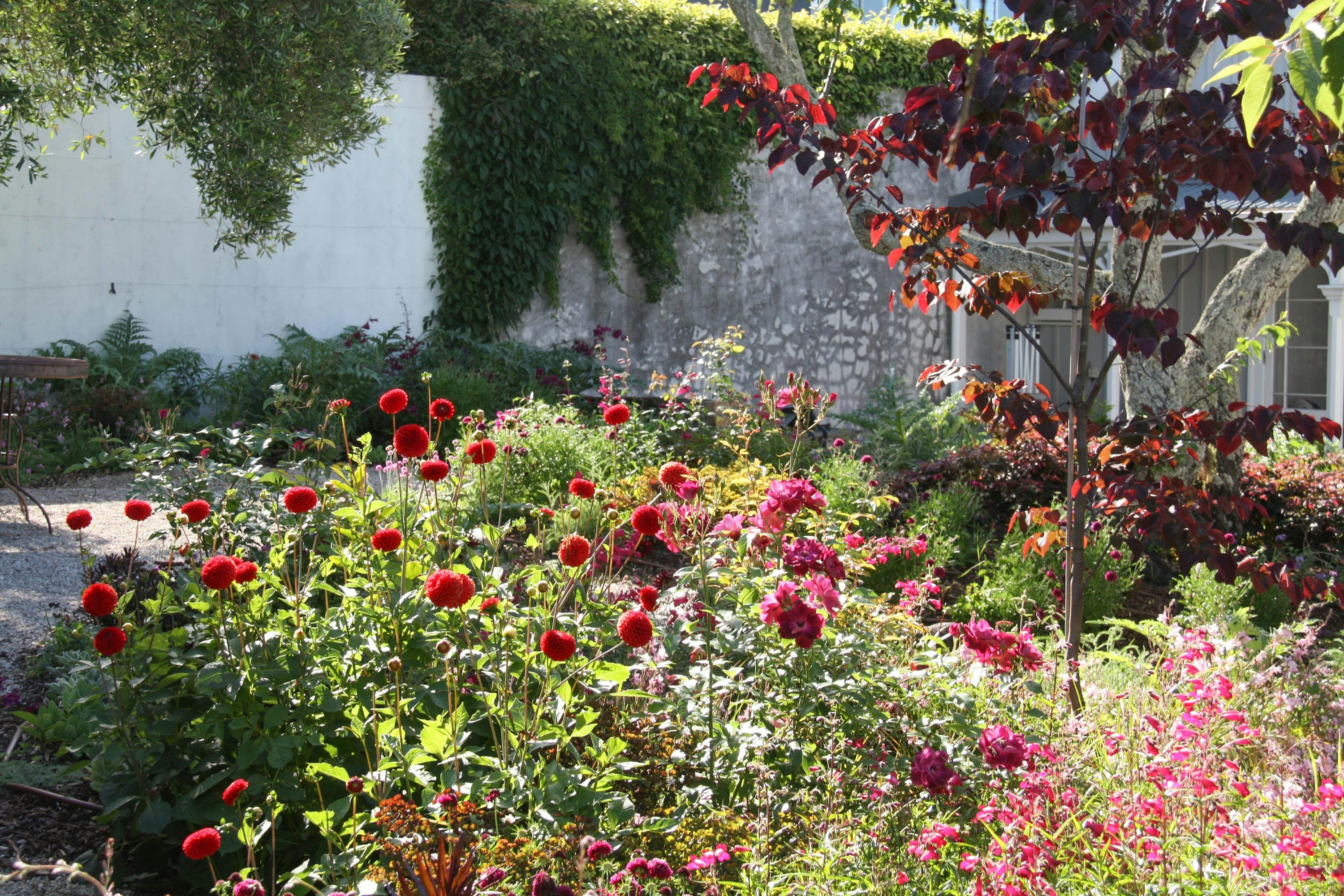
‘Zoe’s Red’ (above) is a glowing, fire engine red pompom that has the most vigorous tubers I have ever seen – at least tripling in size every year – an invaluable plant to fill unused sunny corners of the garden.
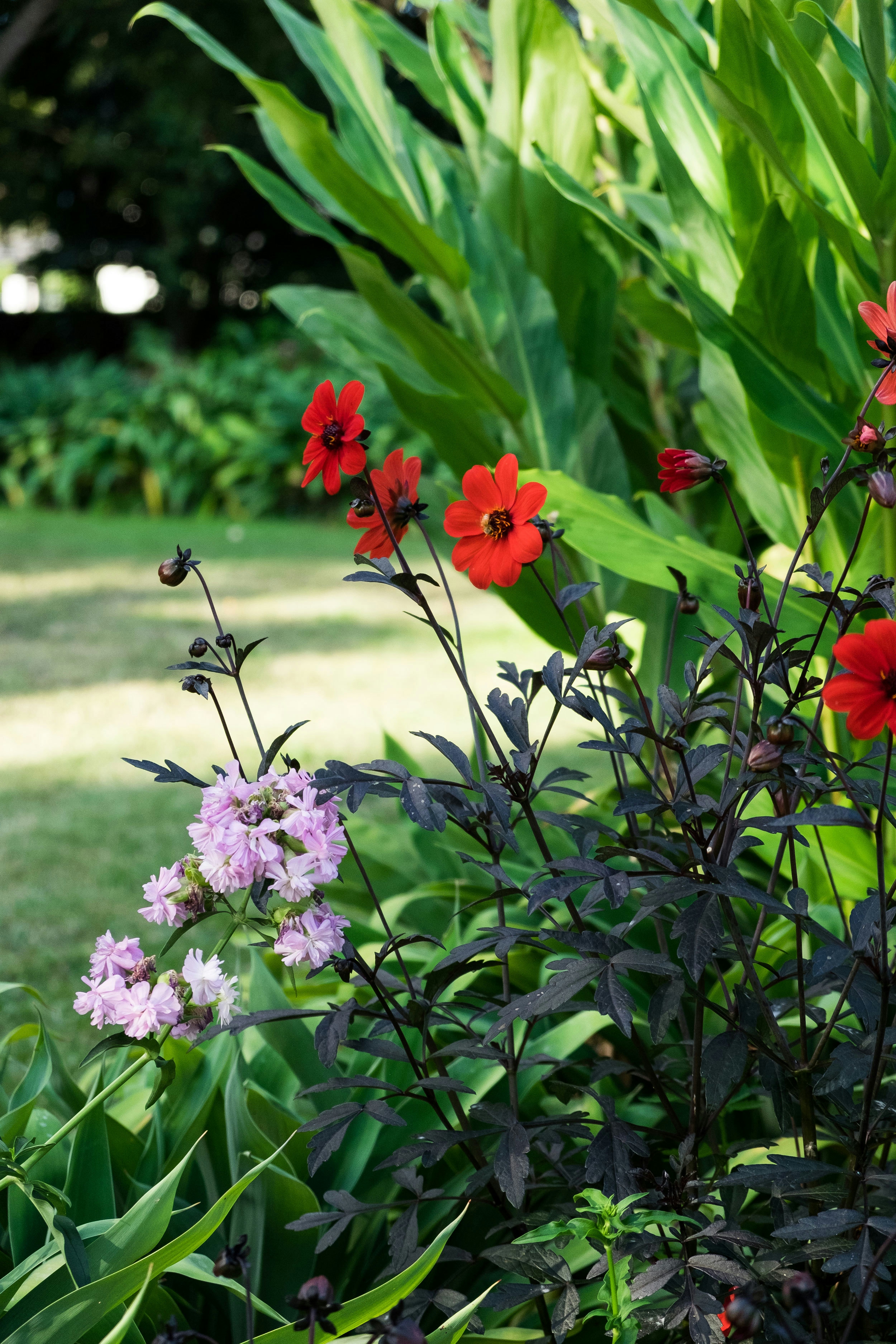
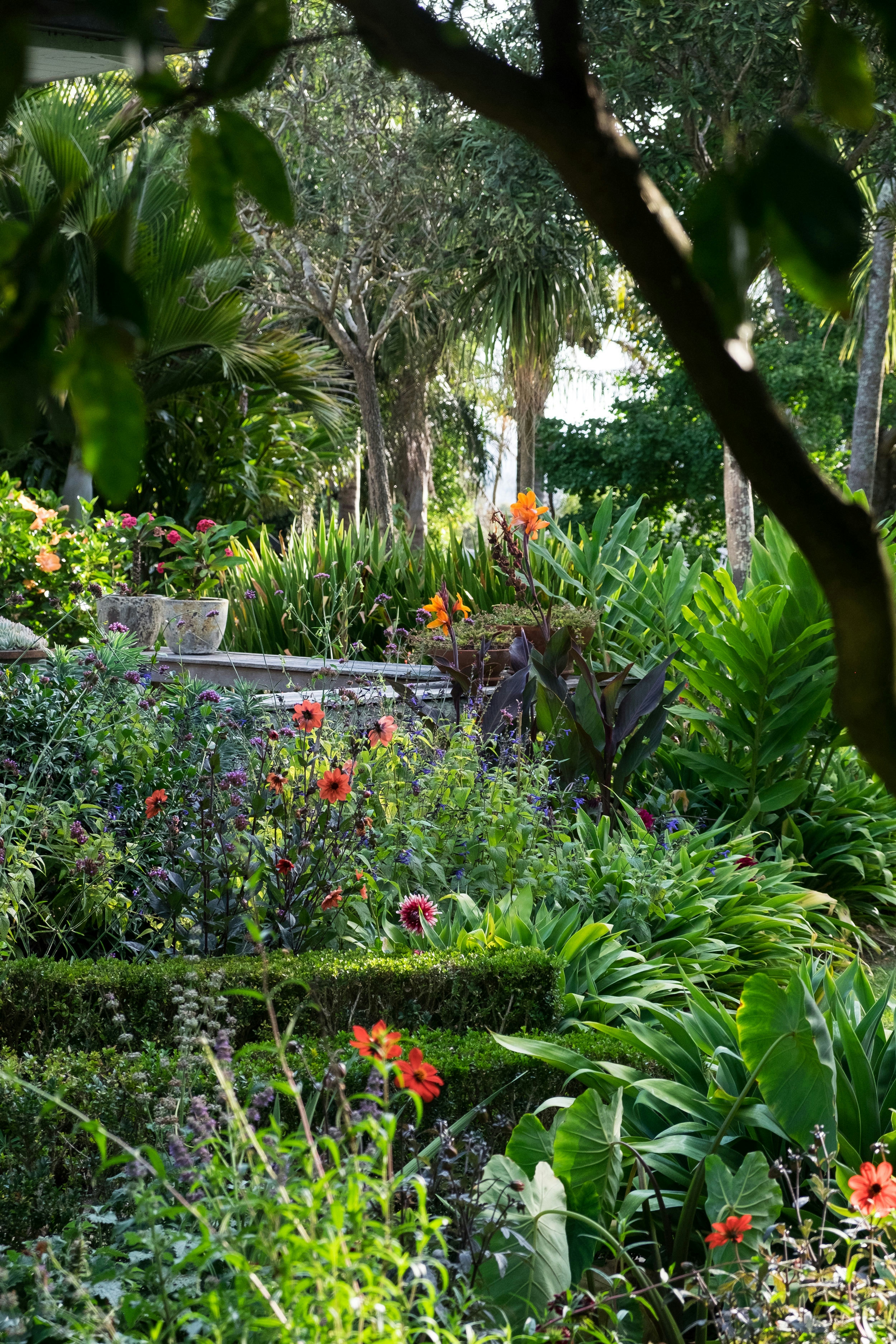
Dahlias tend to be associated with a rambling cottage garden, but can be at home in many planting palettes. Be inspired by the ‘Exotic Garden’ at Great Dixter by planting redskin dahlias such as the ‘Mystic’ varieties (above) with canna, taro, ginger and verbena, the dark foliage contrasts lush green perfectly with pops of hot red, orange and purple.
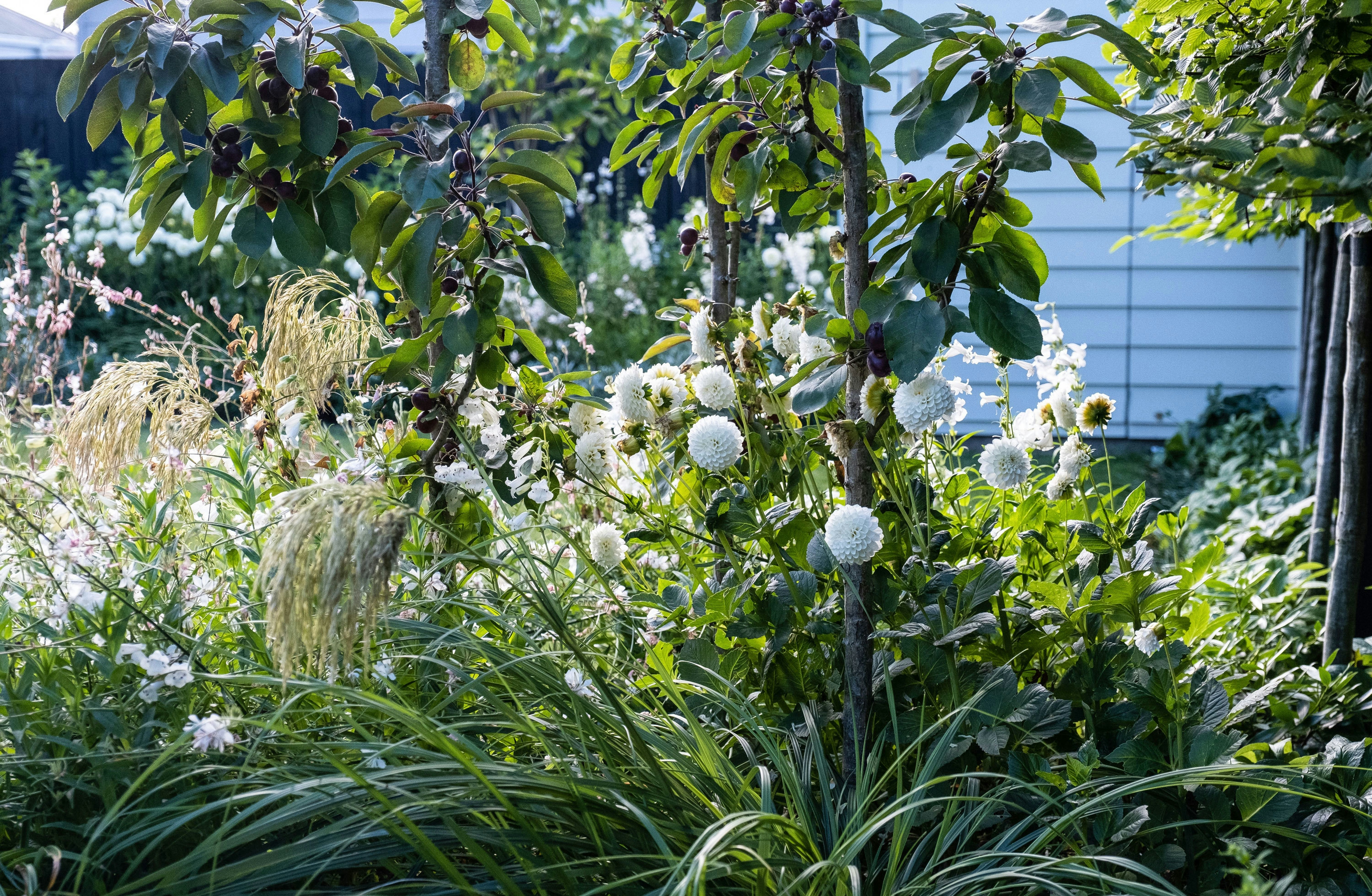
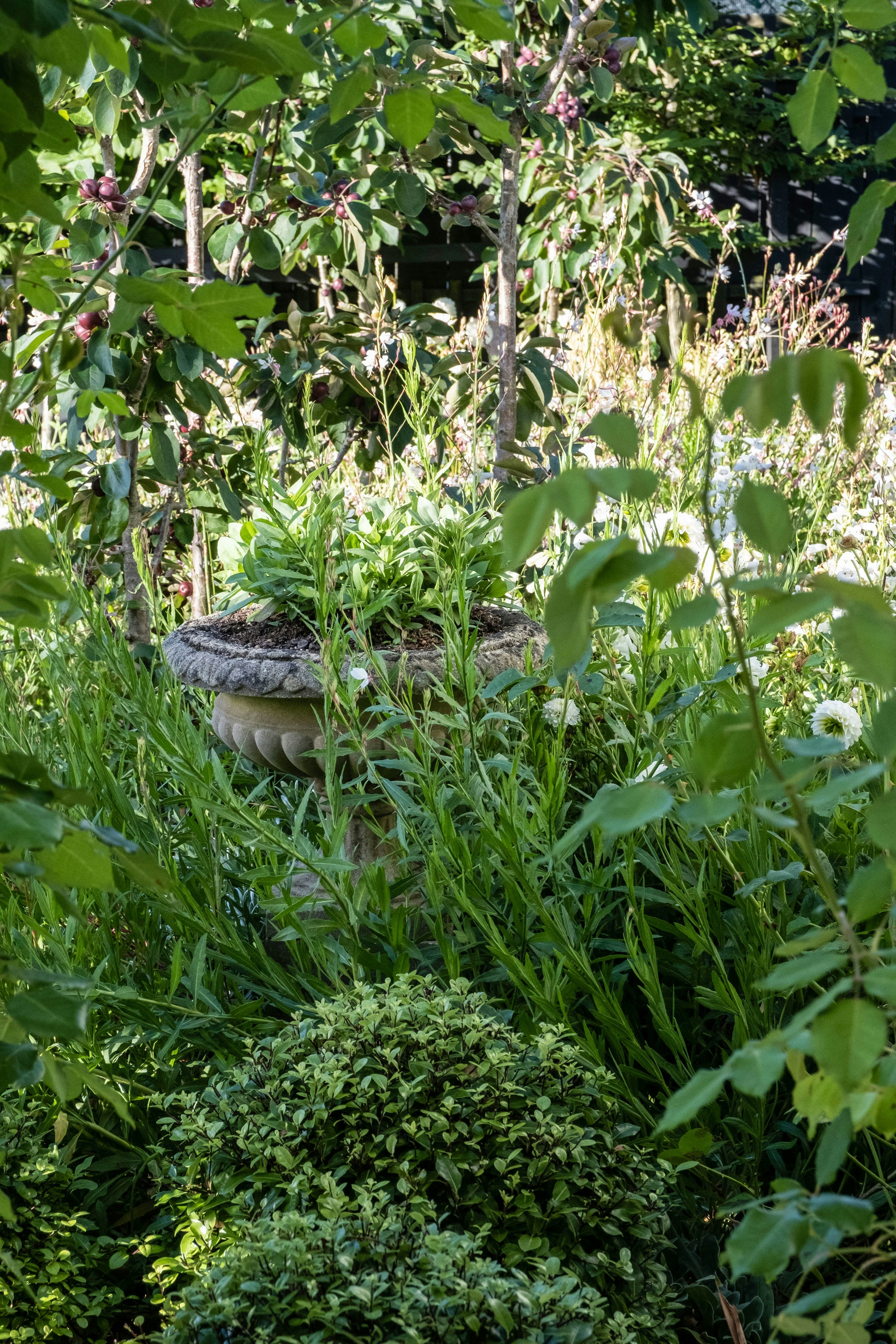
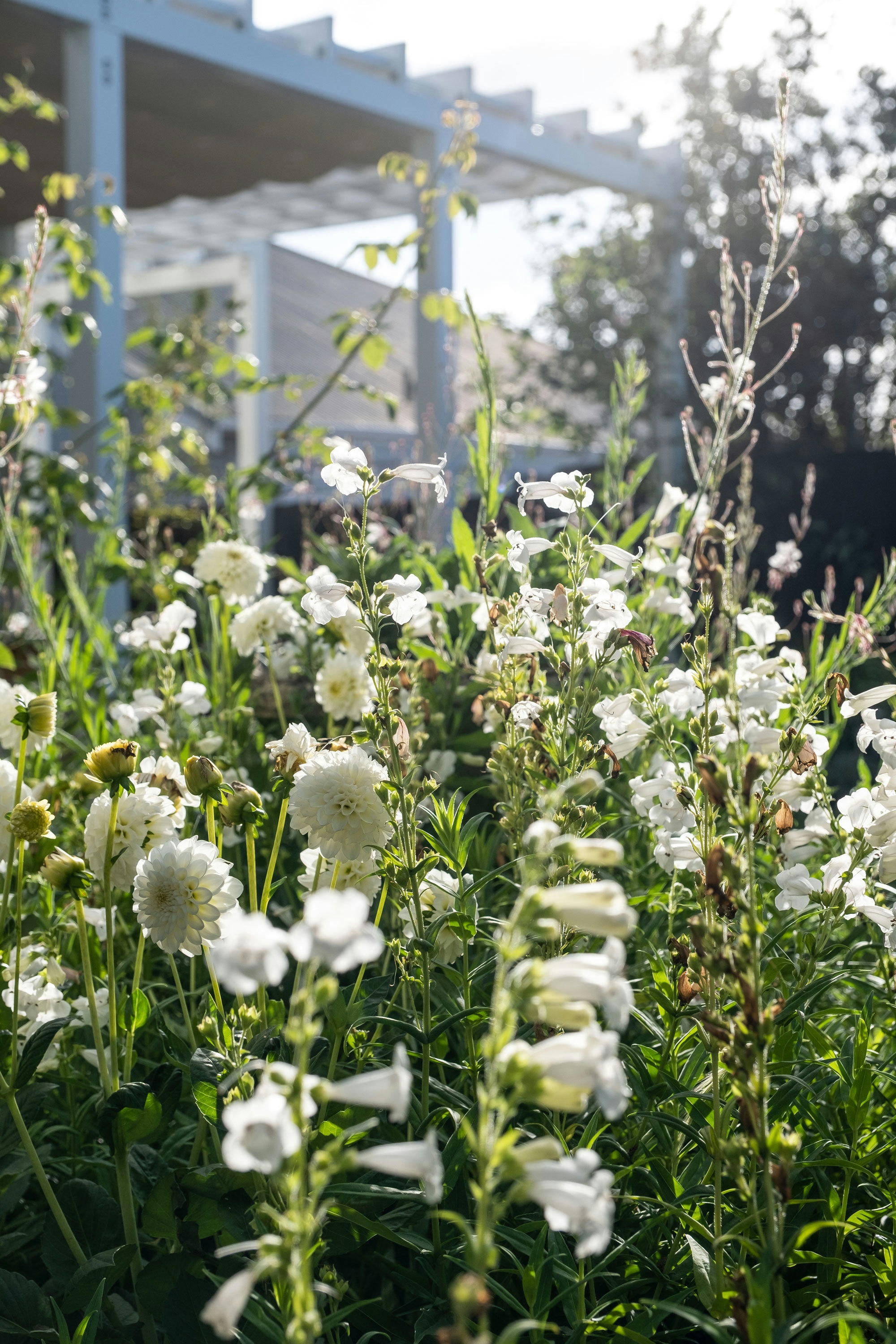
To create a more formal look, pair the ball form ‘White Aster’ (above) with gaura, penstemon, lambs ears and evergreen natives such as Chionochloa flavicans and pittosporum topiary balls.

For a glorious picking garden choose a lucky dip of your favourite colours and forms, and plant in raised beds with helenium, achillea, cosmos and zinnia.
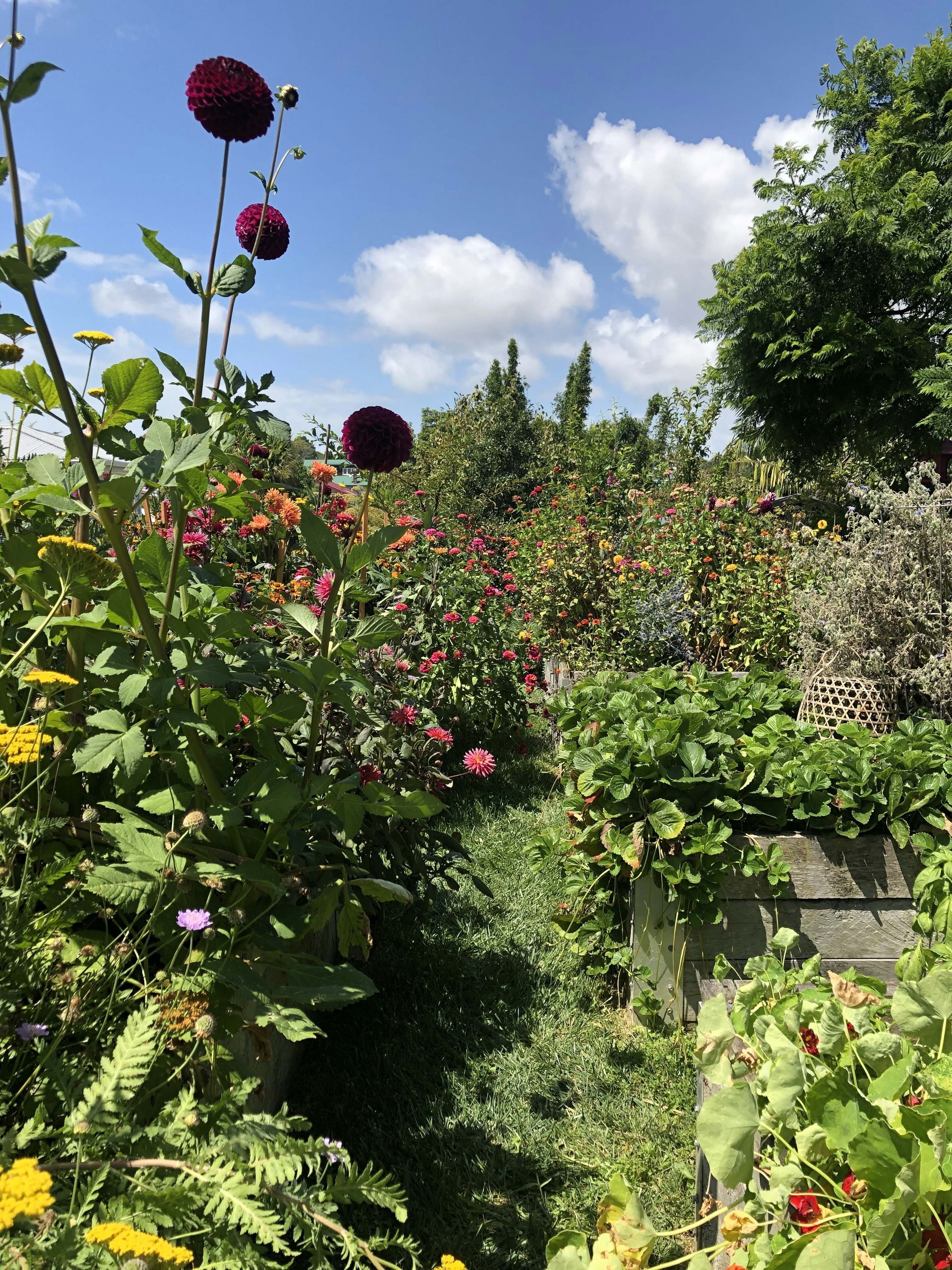
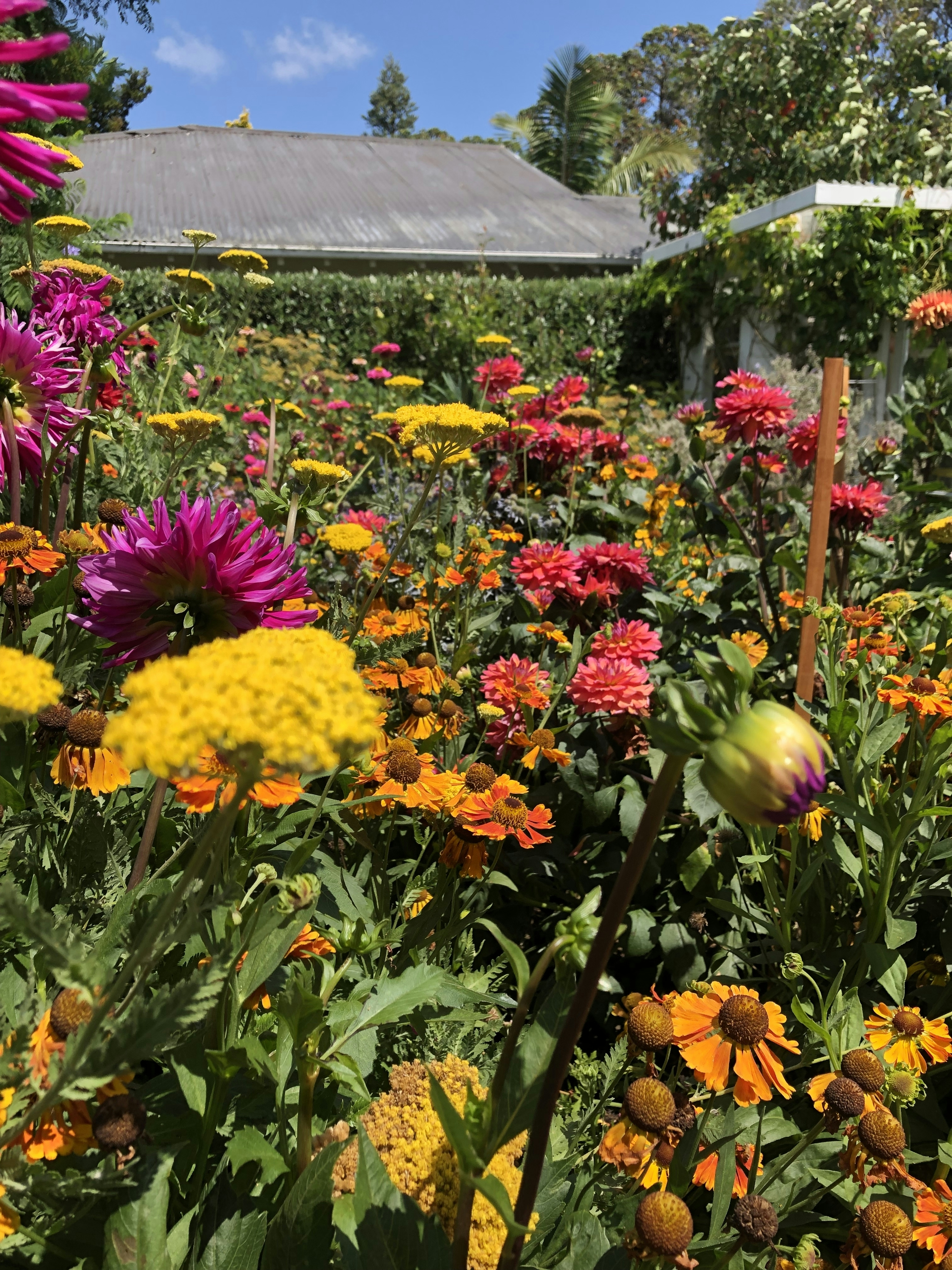
Ready to grow some of your own?
LOCATION
Most dahlias require a good amount of growing space, and invariably need full sun to thrive. The success of your dahlias will depend greatly on their location in the garden. Up against a sunny fence or wall is a great option as the structure acts as a support as the plants get larger. As dahlias bush out over the season they may shade other plants around them, so be careful to choose a position with ample space.
GROWING CONDITIONS
Dahlias prefer good drainage and fertile, slightly acidic soil. Dig in lots of compost and add blood & bone or sheep pellets when planting. Special attention will need to be taken if you are on clay soil, as dahlia tubers do not like wet feet and can be prone to rot if they are waterlogged. Counter balance the drainage issue by adding sand, gravel or gypsum to clay soil before planting your tubers.
RISE ABOVE IT
An ideal way to avoid issues with drainage is to grow dahlias in raised beds. If you have the space dedicate an extra vegetable bed to a Summer picking garden, the tubers can be lifted and stored in Autumn, freeing up the bed for edibles again next season.
BALCONY GARDEN
Dahlias can be planted in pots if they are watered regularly and given sufficient nutrients such as compost and fertiliser. You want to emulate the conditions in the ground so the larger the pot the better - the depth of soil provides a more hospitable environment. A top layer of mulch is a must for dahlias in pots so they do not succumb to wilt in the Summer heat. Pot dahlias are compact growing varieties with masses of flowers on short stems and are the best option if you have smaller pots and/or are short on space.
PLANTING
Planting dahlia tubers can be done anytime after the threat of frost has passed, normally in New Zealand between late September (in warmer regions) any time to early December. Tubers should be planted with the crown of the tuber just below the surface, covered with soil and finished with a layer of mulch. If you have left your dahlias in the ground over Winter the new growth will start to appear during this time.
LEAN ON ME
Tall varieties should be staked so they do not falter under their own weight, and for protection during storms. It is best to install stakes when tubers are planted, avoiding damage to the roots later on. Use recycled jersey cloth as a tie, this allows for movement so the brittle stems do not snap in the wind. Tying can be done at intervals along the stem as the dahlias grow, or alternatively use multiple stakes around the plant and tie between them to provide support, much like a hug. Simple cages can be installed early for the dahlias to grow up around (seen here at Ayrlies Garden), an elegant solution that holds up well in the wind. If your dahlias are surrounded by other tall sturdy plants this may have a similar effect as staking.
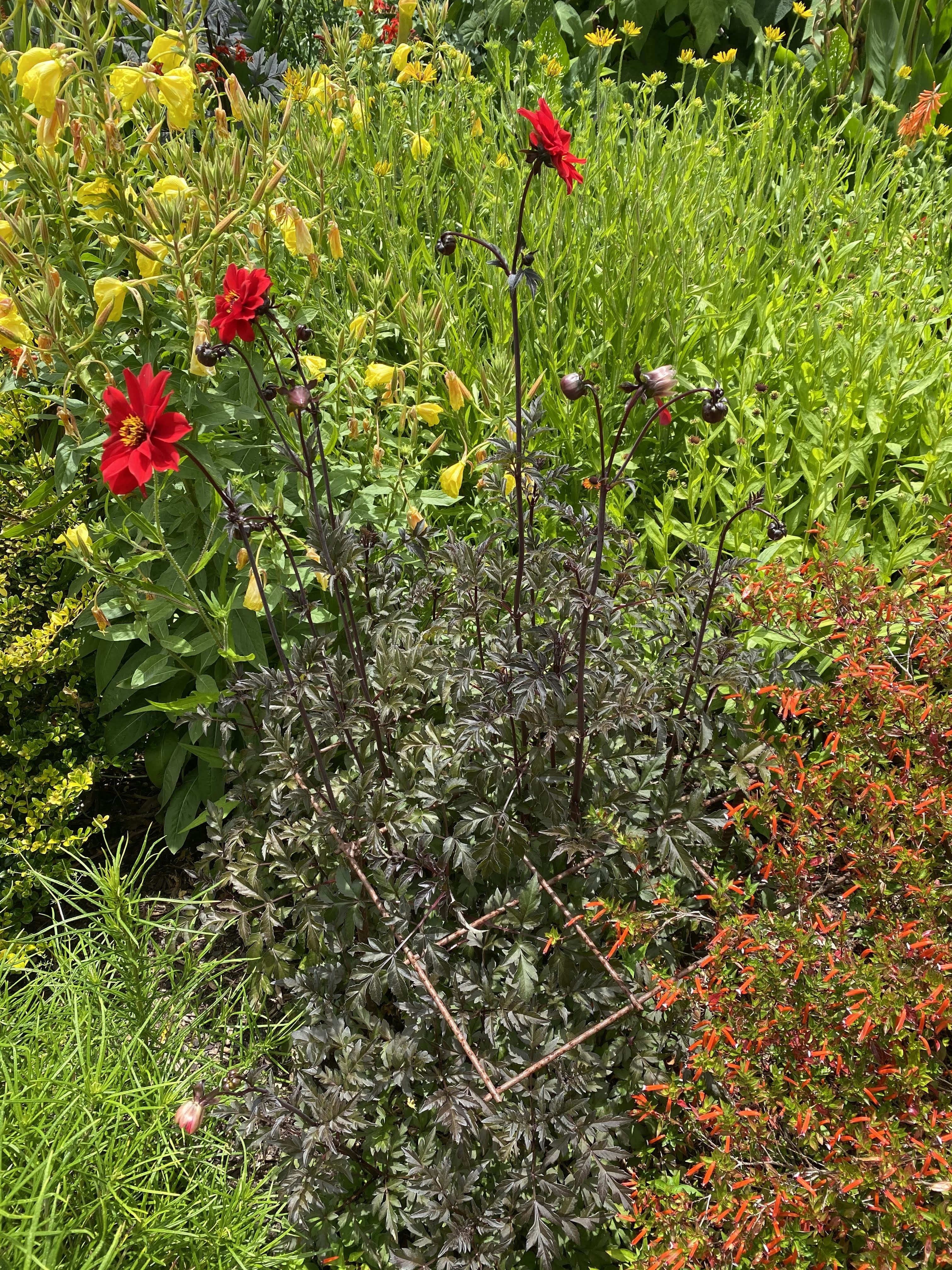
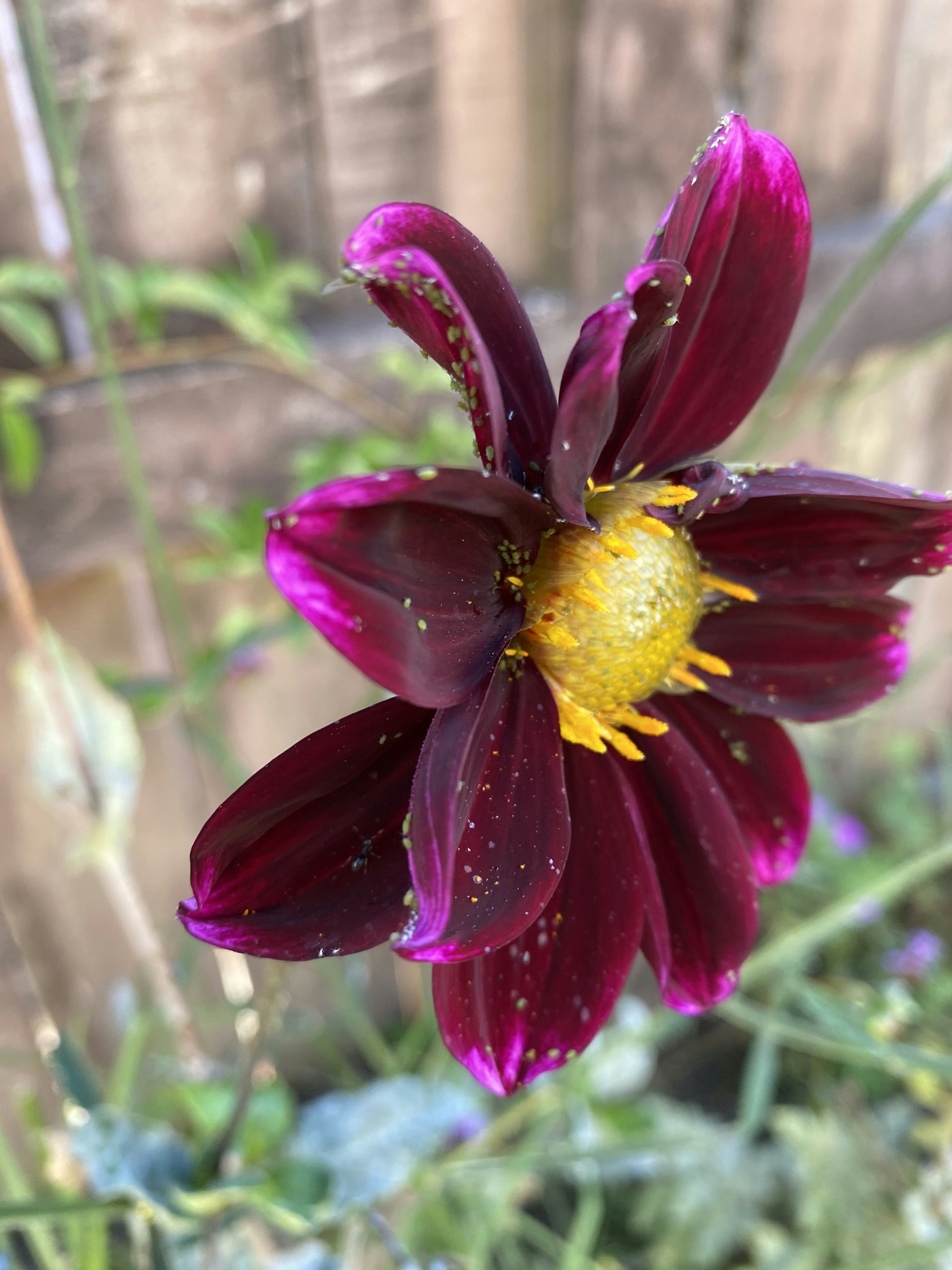
PESTS & PROBLEMS, FOOD & WATER
Slugs and snails can be a problem for new shoots so keep a watchful eye as your dahlias emerge. Dahlias will flower better in a drier season, although are not completely drought tolerant. During the height of Summer they prefer a good, deep soaking at least once or twice a week in the cool of the morning, avoiding watering the foliage as this can burn in the sun or cause powdery mildew if left wet overnight. It may be necessary to remove dead foliage to help with airflow and deter mould. Dahlias are hungry plants and will respond well to feeding with your favourite natural fertiliser once every month after buds appear. Fertilisers rich in potassium will encourage stronger stems and better flowers and can be applied from late December onwards. As well as slugs and snails, dahlia pests include earwigs, aphids and red spider mites. Recipes for natural homemade remedies and sprays can be found online if you encounter any of these pesky pests.
PROLONG THE SEASON
To ensure a long flowering season and healthy plants, regularly cut the blooms to bring indoors or gift to friends – you will be rewarded with even more flowers! Unlike some flowers dahlias will not open after they are cut so only pick fully open flowers. When deadheading take care to learn the visual differences between new buds and spent ones on your plants, as they can look very similar. Regular deadheading is necessary for the overall health of plant and helps to prolong the season - let them go to seed in Autumn and watch small birds feast on the beautiful seed heads. When the rains set in your plants will start to brown and at this point you could cut them right back, leaving a short stalk to help identify the crown of the tuber.
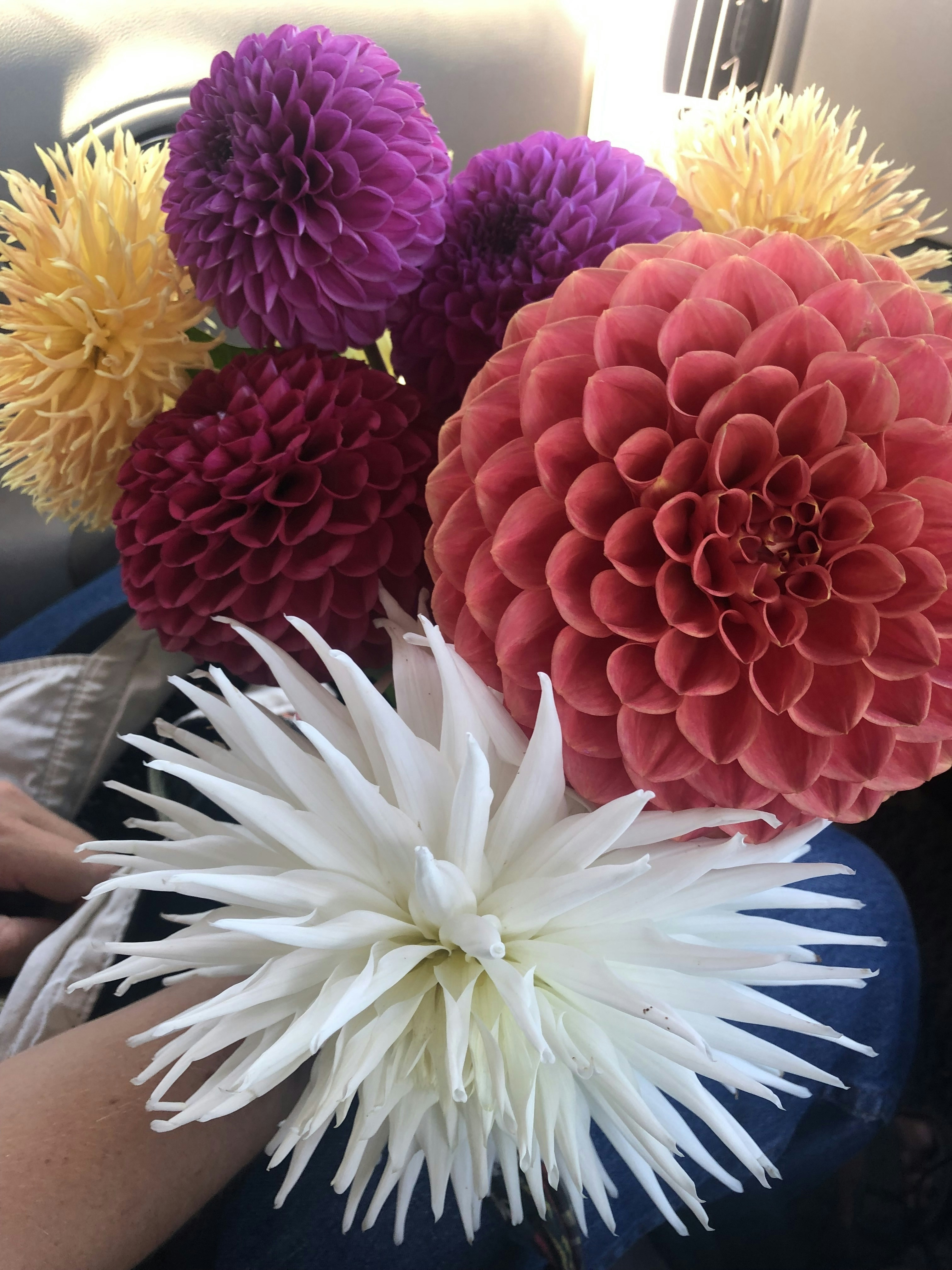
The question I get asked most often is whether I lift my dahlias at the end of the season.
Simply put, no, as my garden is in Auckland on volcanic soil. The climate is mild and the earth is very dry. The tubers do their thing under the ground and sprout back in Spring, often with me having forgotten they exist. The only time I will dig tubers up is when they are no longer suited to the spot I planted them, and I plan to relocate them next year. I store them in a plastic tub full of sawdust in the garage and give them a spritz of water every so often so they don't dry out.
If you are in a region with colder Winters you will need to lift your tubers in May or June to protect them from the frosts. If your soil holds water you will also need to dig them up so they do not rot during the wetter months. Simply unearth the tubers and store them somewhere they will neither dry out nor rot, such as in a tub under a hedge or large tree, covered in sawdust or bark. Remember to label your tubers so the species name is not lost.
Tubers expand and multiply under the ground as they grow, meaning you will have more than when you planted them - free plants. Just another reason to love dahlias!
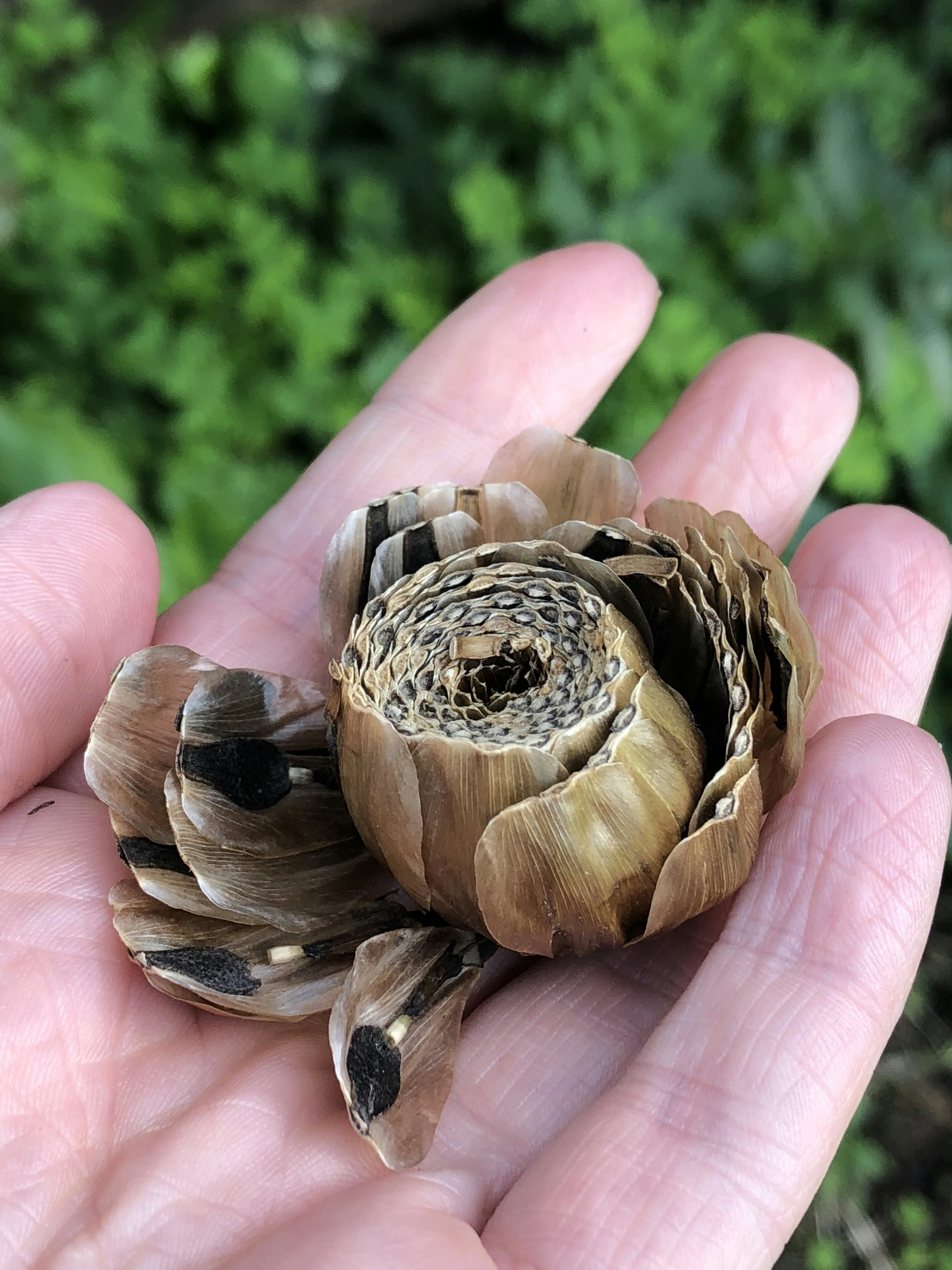

THE DAHLIA & CHRYSANTHEMUM SOCIETY
If you have caught the bug for growing dahlias you could consider joining a local club. The Auckland Dahlia & Chrysanthemum society has clubrooms at the Horticulture Centre in Western Springs. The members are a wealth of knowledge, many of whom have been growing and showing dahlias for seventy years. The Society holds the annual Dahlia Show in February and it is a must attend on the horticulture calendar. The beauty of the incredible blooms will blow you away, and if you get there early enough there are cut stems you can take home for a gold coin donation. The Society is always welcoming to new members, including having new categories in their shows to introduce dahlias and encourage younger generations to get into growing these amazing plants.
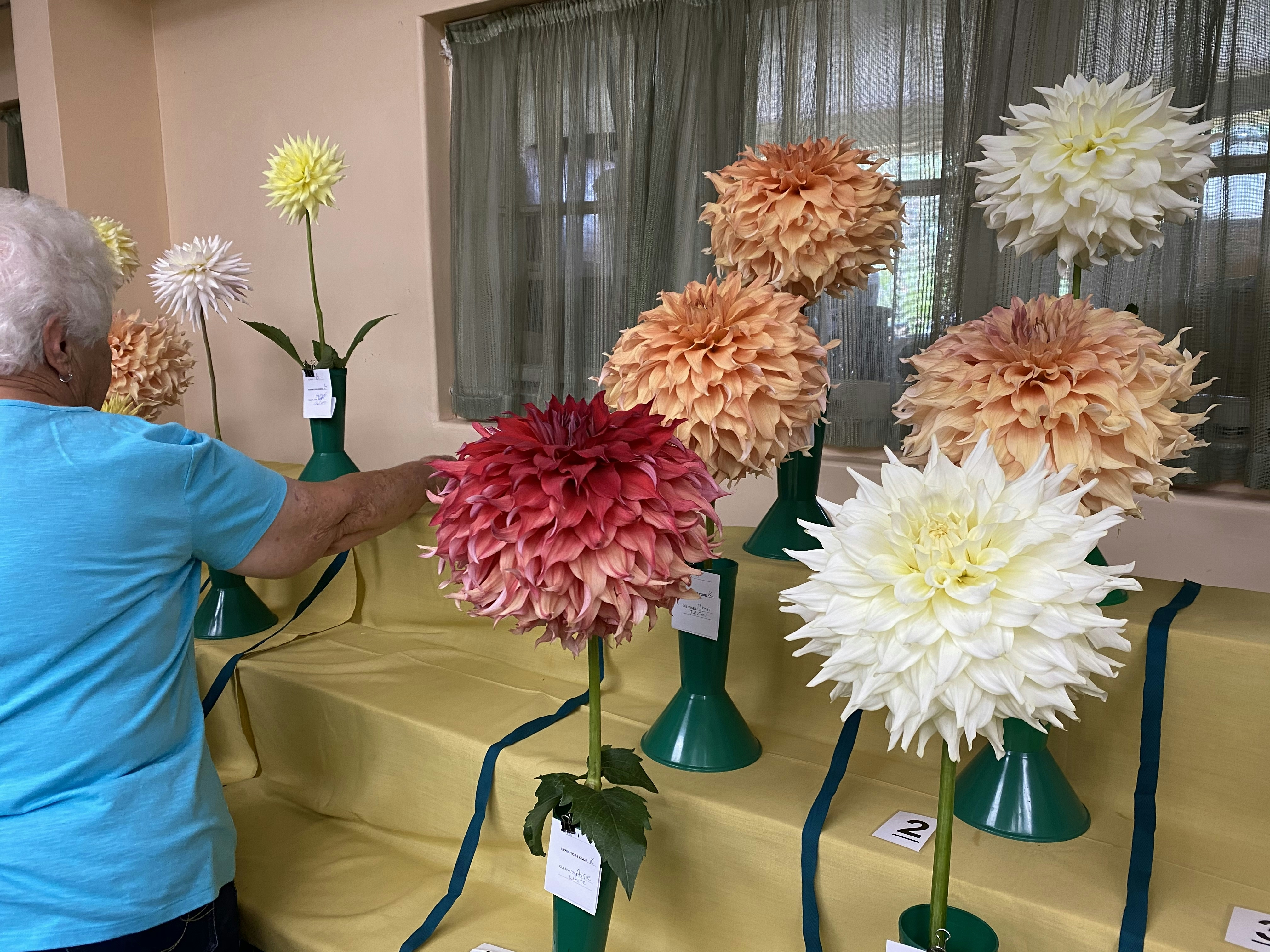




Words by Neeve Woodward
Photos by Neeve Woodward & Carme Aguayo
Join Our Newsletter
XANTHE WHITE DESIGN
Auckland Studio
Phone: 09 815 1187
Email: info@xwd.co.nz
XANTHE WHITE DESIGN
Wellington Studio
Email: wellington@xwd.co.nz
